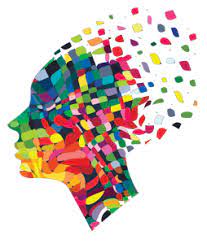The Power of Graphics: Enhancing Communication and Creativity
Graphics play a crucial role in our daily lives, from the websites we visit to the advertisements we see on billboards. They have the power to convey complex information in a visually appealing and easily digestible manner, making them an essential tool for communication and creativity.
Graphic design is the art of creating visual content to communicate messages effectively. Whether it’s designing a logo for a brand, creating illustrations for a book, or developing infographics to present data, graphics help capture attention and convey meaning in a way that words alone cannot.
One of the key benefits of using graphics is their ability to enhance understanding. Research has shown that people are more likely to remember information when it is presented visually rather than in text form. This is because visuals engage multiple senses and can simplify complex concepts through imagery, color, and layout.
Moreover, graphics can evoke emotions and create connections with the audience. A well-designed graphic has the power to elicit feelings of joy, excitement, curiosity, or even nostalgia. By tapping into emotions, designers can establish a strong bond between the viewer and the message being conveyed.
In today’s digital age, where attention spans are shorter than ever, compelling graphics are essential for capturing and retaining audience interest. Whether it’s through social media posts, website banners, or product packaging, visually appealing graphics can make a significant impact on how information is perceived and remembered.
From simple icons to intricate illustrations, graphics come in various forms and styles, allowing designers to unleash their creativity and express ideas in unique ways. The versatility of graphics enables artists to experiment with colors, shapes, textures, and typography to create visually stunning compositions that leave a lasting impression on viewers.
In conclusion, graphics are powerful tools that enhance communication by simplifying complex information, evoking emotions, and capturing audience attention. As technology continues to advance, the role of graphics in shaping our visual landscape will only grow stronger. Embracing the art of graphic design opens up endless possibilities for creativity and expression in today’s fast-paced world.
Understanding Graphics: Definitions and Applications in Art, Computing, and Media
- What do you mean by graphics?
- What does graphics mean in drawing?
- What is the graphics in a computer?
- What is the meaning of graphic content?
What do you mean by graphics?
Graphics refer to visual representations or images created using computer software, drawing tools, or traditional artistic techniques. In the context of design and communication, graphics serve as a means to convey information, ideas, or emotions through visual elements such as illustrations, charts, diagrams, photographs, and typography. By combining colors, shapes, lines, and textures, graphics help enhance understanding and engagement by presenting content in a visually appealing and easily comprehensible format. In essence, graphics play a vital role in various fields such as advertising, web design, publishing, and multimedia production by providing a visual language that communicates messages effectively to a wide audience.
What does graphics mean in drawing?
In the context of drawing, graphics refer to the visual elements and techniques used to create and manipulate images on a two-dimensional surface. Graphics in drawing encompass various aspects such as line quality, shading, composition, perspective, and color theory. These elements play a crucial role in conveying the artist’s intended message or capturing the essence of a subject with precision and creativity. By mastering graphic techniques, artists can effectively communicate their ideas, emotions, and observations through the medium of drawing, bringing their artistic vision to life on paper or digital platforms.
What is the graphics in a computer?
Graphics in a computer refer to the visual elements and images displayed on a screen that are created and manipulated through graphic design software and hardware. These graphics can range from simple icons and text to complex 3D animations and virtual environments. The graphics in a computer are essential for enhancing user interfaces, displaying multimedia content, playing video games, and performing various visual tasks. By utilizing graphics processing units (GPUs) and specialized software, computers can render high-quality images with speed and precision, making them integral components of modern computing systems.
What is the meaning of graphic content?
Graphic content refers to visual material that may contain explicit or sensitive imagery, such as violence, nudity, or other potentially disturbing elements. In the context of media and online platforms, graphic content is often accompanied by warnings or age restrictions to alert viewers about its nature. The purpose of graphic content can vary, from raising awareness about social issues to providing realistic depictions in artistic works. Understanding the meaning of graphic content is essential for navigating digital spaces responsibly and respecting the diverse sensitivities of audiences encountering such material.

